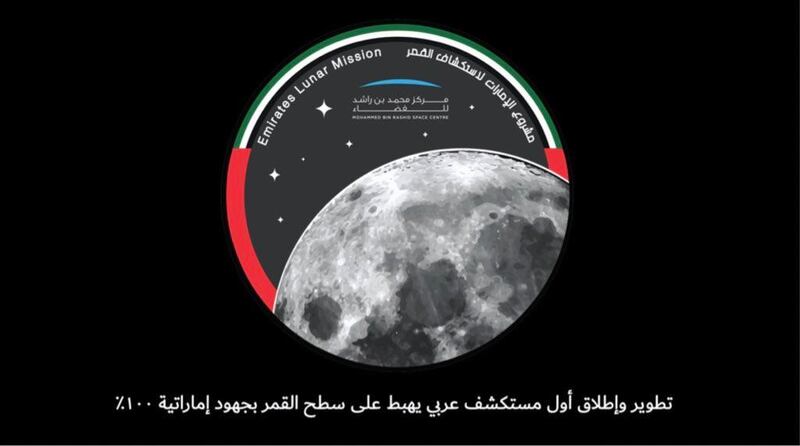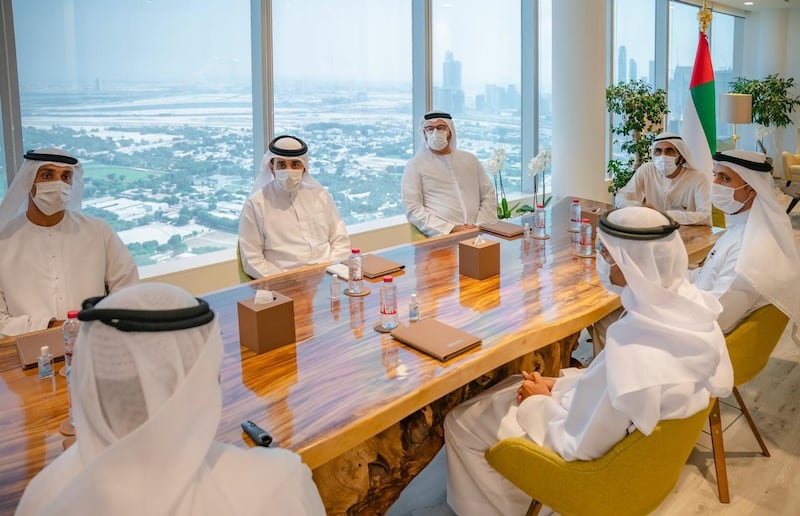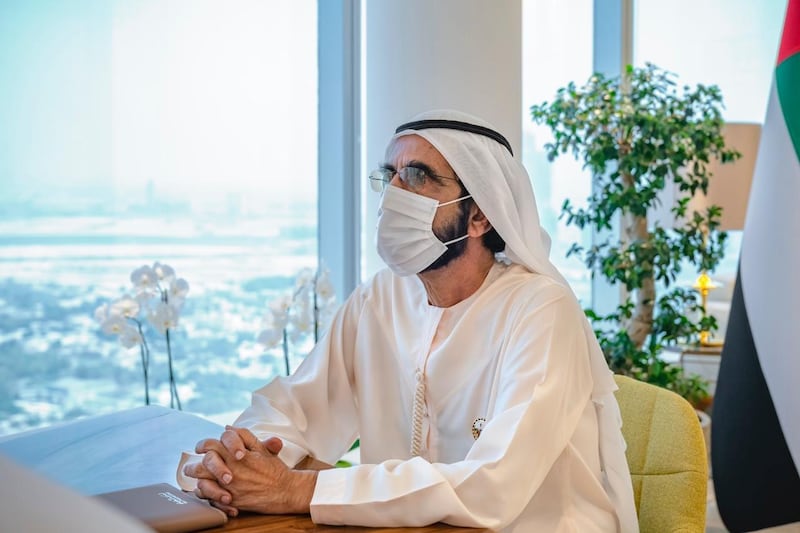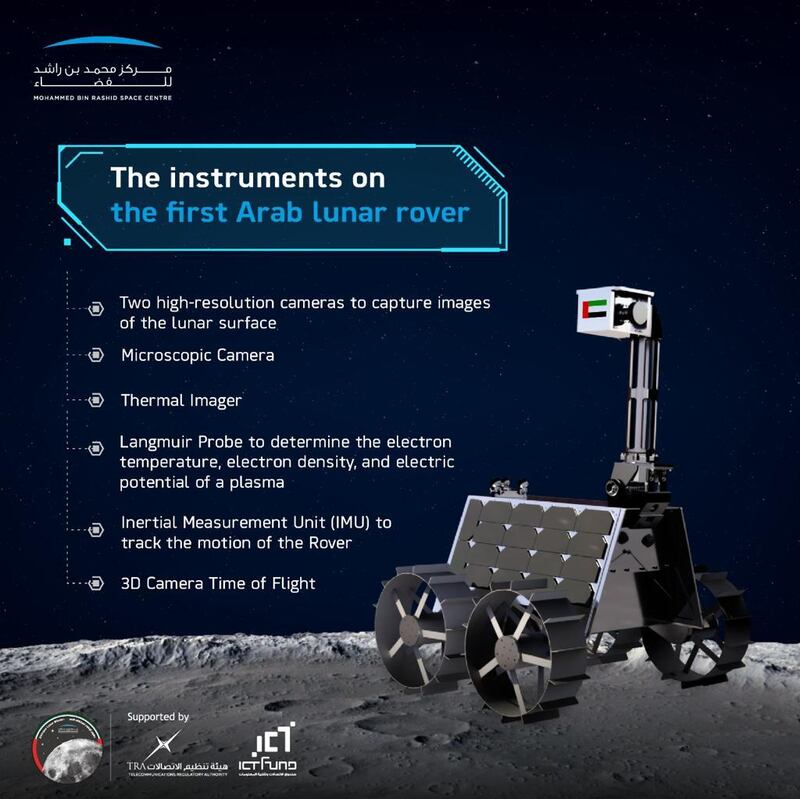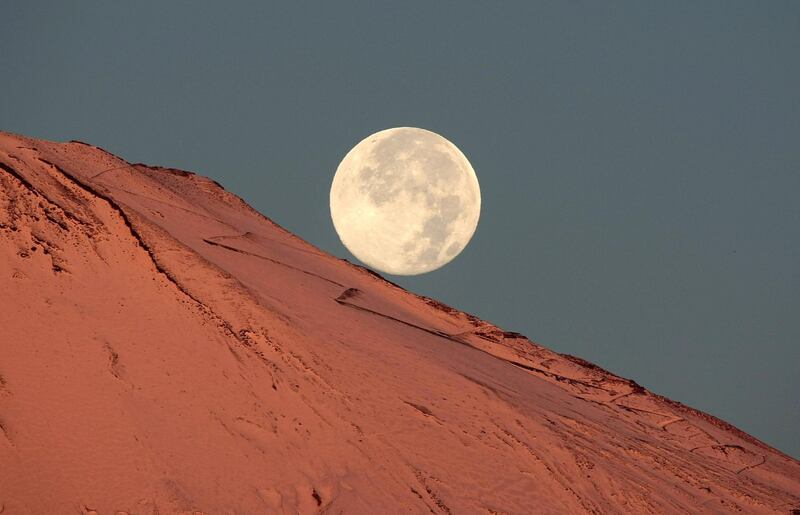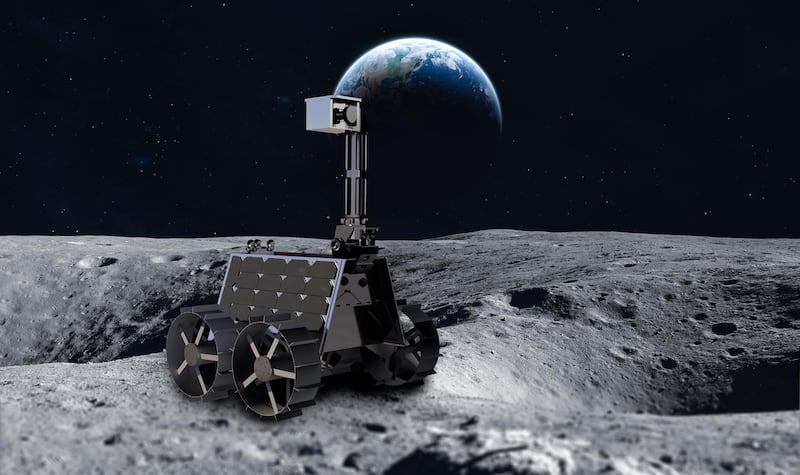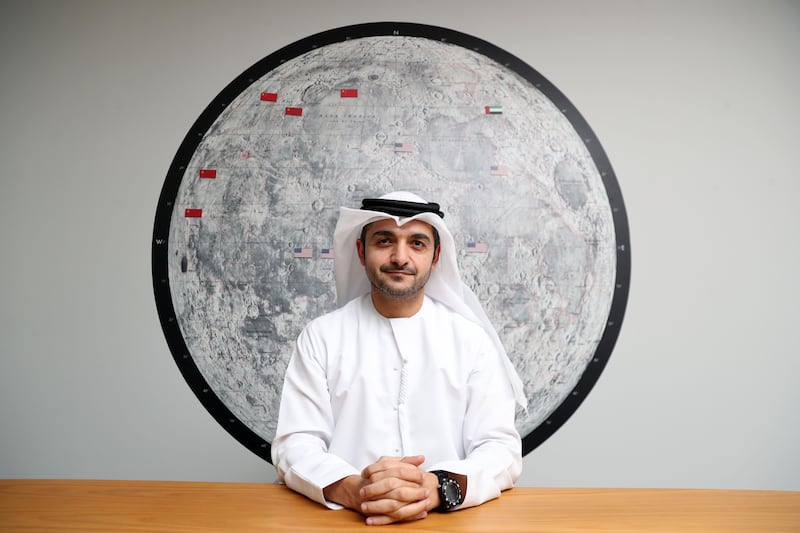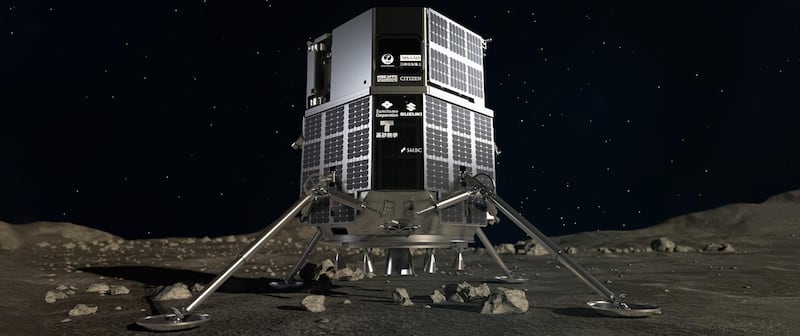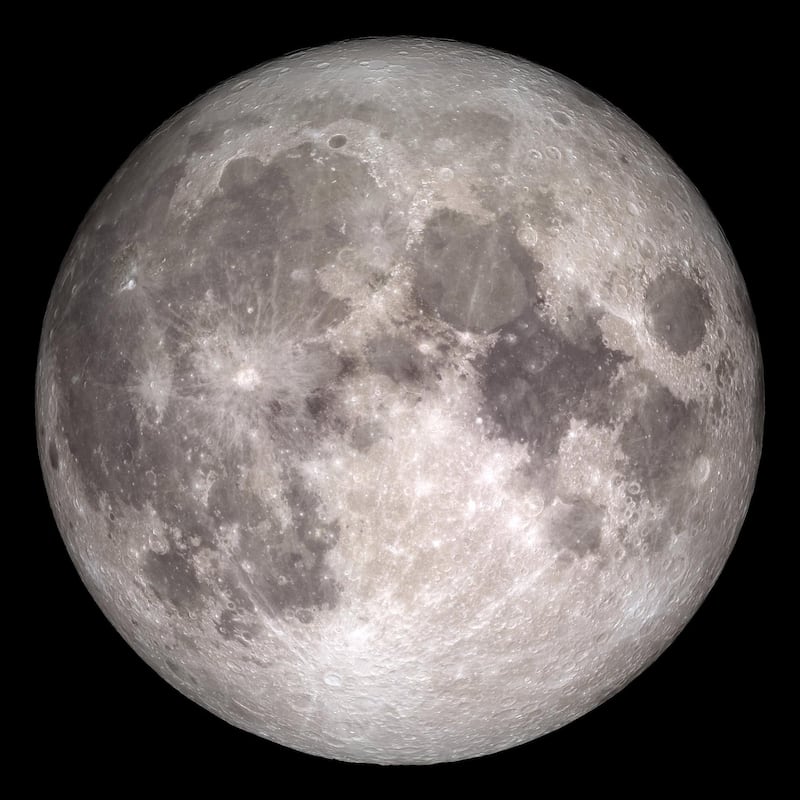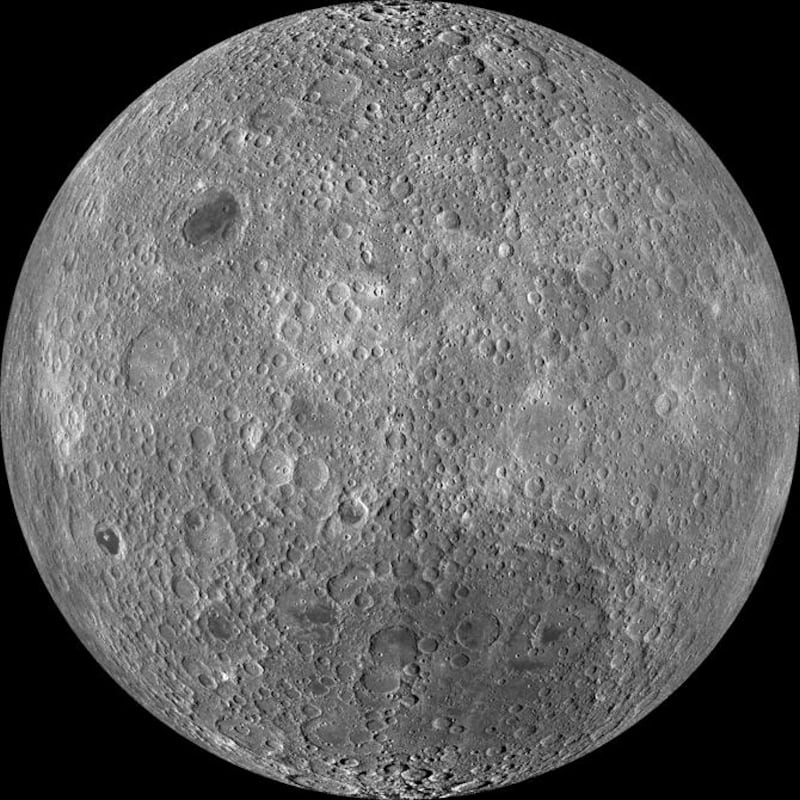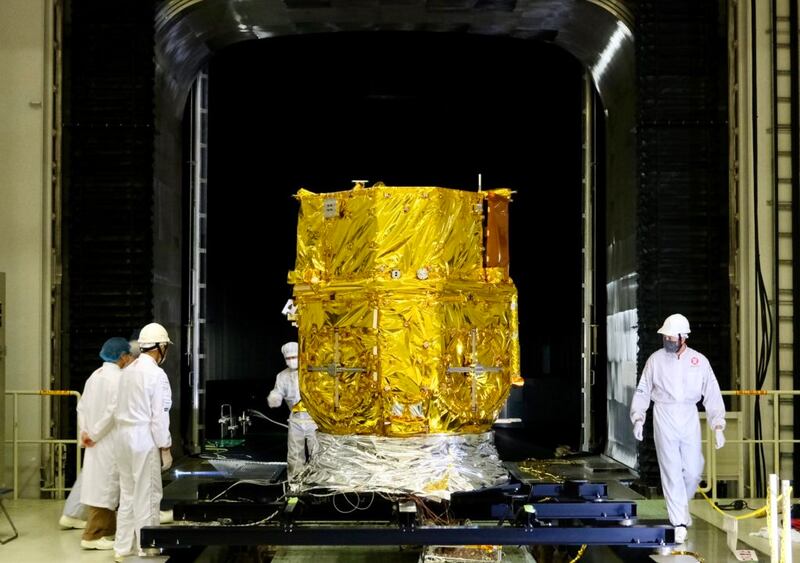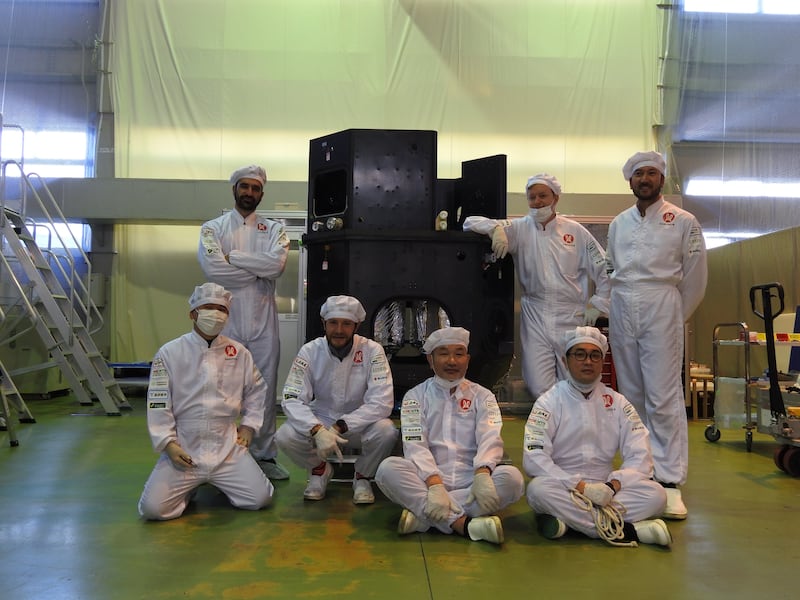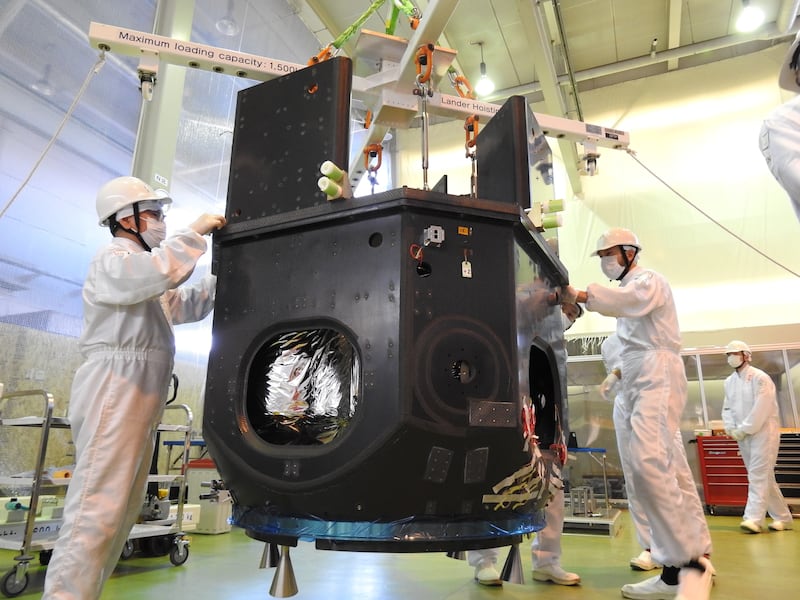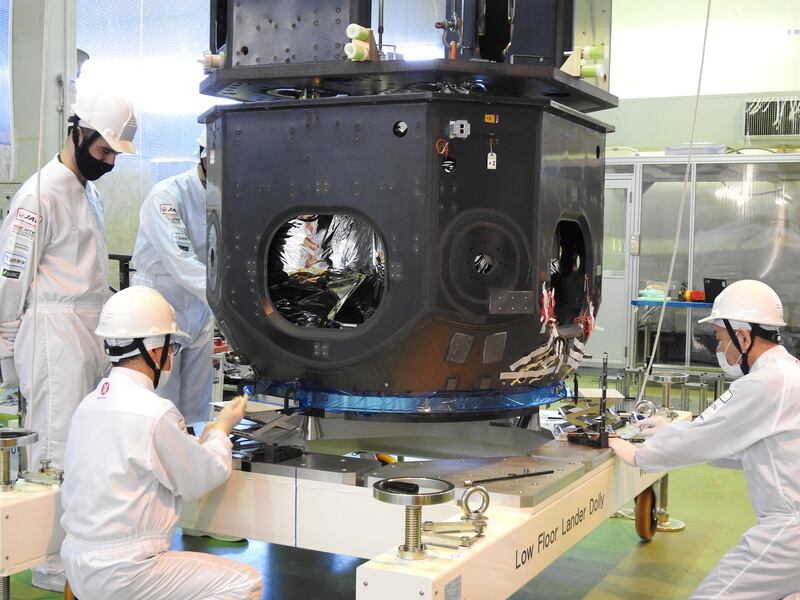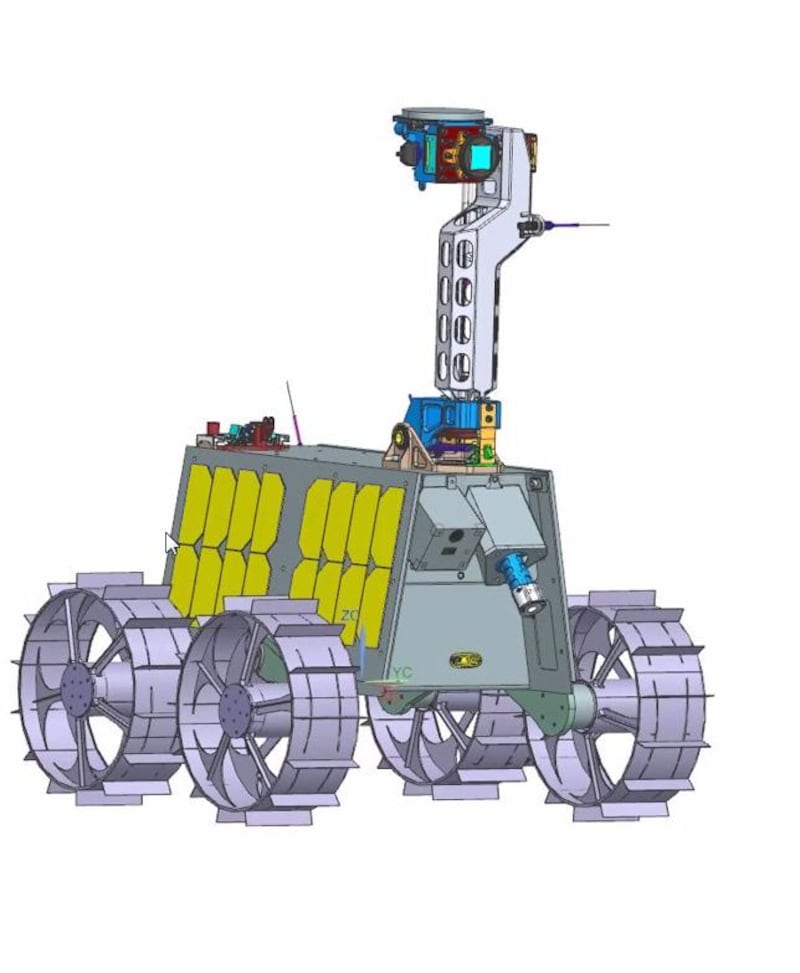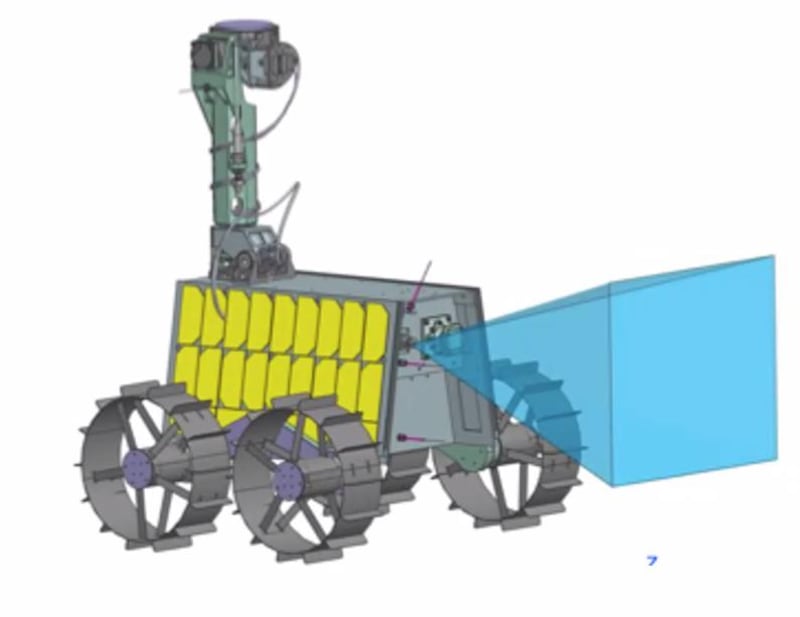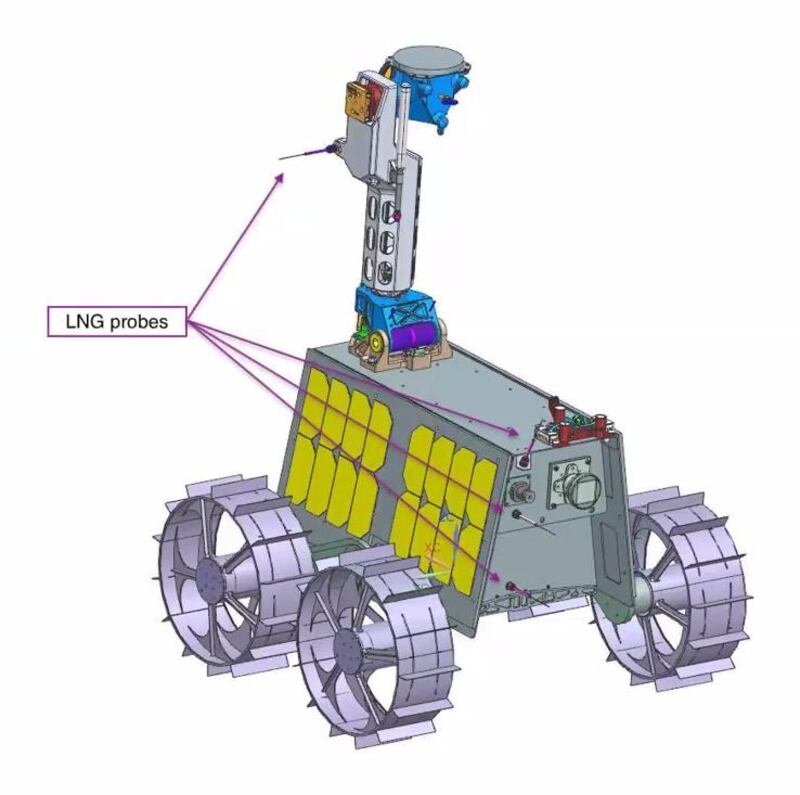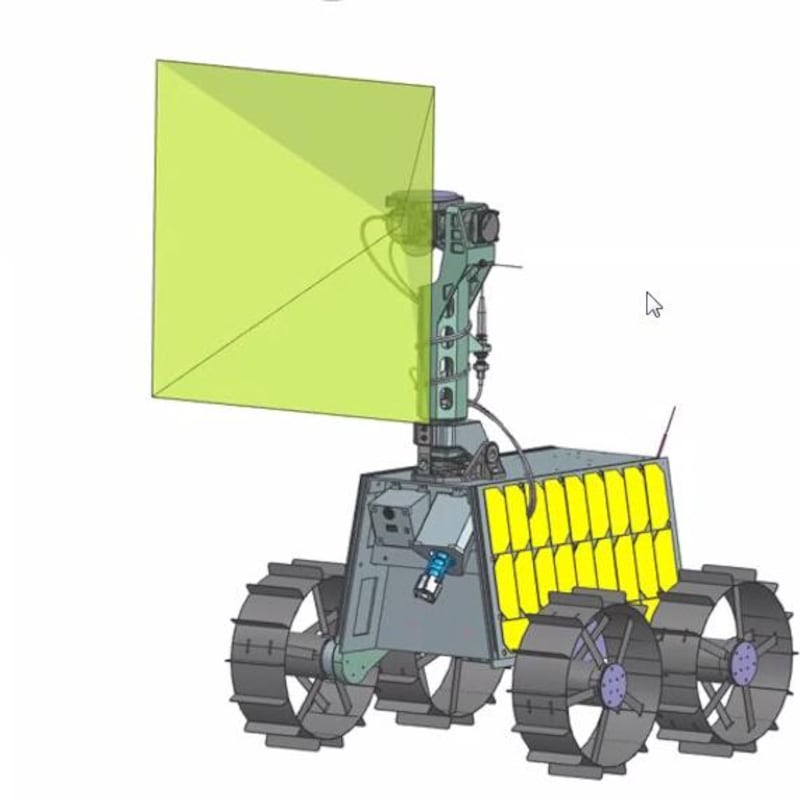The UAE joining Nasa’s Artemis Accords on peaceful space exploration paves the way for sending the first Emirati to the Moon in future, a Nasa official has said.
Last week, the Emirates and six other nations signed on to become founding members of the US-led Accords, which outline responsible and peaceful Moon exploration.
Mike Gold, acting associate administrator for Nasa's Office of International and Interagency Relations, told The National that the partnership lays groundwork for partner countries to collaborate in lunar missions.
“The UAE can, and we hope will, become a strong and robust partner in the Artemis programme,” said Mr Gold, referring to a project that seeks to establish a human base on the Moon.
“We look forward to collaborating not only on lunar rovers, but on other forms of science and orbiters, and eventually human spaceflight as well. The UAE is not only ambitious, but it follows ambitions with funding and actions, which is why they are such an excellent partner for us to join in this unprecedented journey of discovery that is.”
Through the Artemis programme, Nasa will send the first woman and next man to the lunar surface by 2024.
The long-term plan is to build a lunar-orbiting space station, called Lunar Gateway, and use the Moon as a base, so the first astronauts can go to Mars from there.
As of yet, the UAE has not signed an agreement to be part of the Artemis programme, but the Accords have laid the foundation for any future collaboration.
This means that once human spaceflights to the Moon become regular, Emirati astronauts will likely have opportunities to be part of them.
It is a similar format used for the International Space Station (ISS), where partner countries that invested in and helped build the floating laboratory can purchase seats on Russia’s Soyuz spacecraft – or now with SpaceX also – to live and work on the ISS.
Sarah Al Amiri, UAE Minister of State for Advanced Technology and chairwoman of the UAE Space Agency, said after the announcement of the Artemis Accords signing that the international treaty will further cement principals of peaceful collaboration and co-existence in space exploration, planetary science and space engineering.
"This is an essential step that paves the way for lunar and Martian exploration. Our commitment to scientific research, planetary science and space systems engineering is rooted in our desire to nurture and build opportunities, to further our nation’s development," she said.
Maj Hazza Al Mansouri, the first Emirati man to go into space, has previously told The National that he dreams of going to the Moon.
He and reserve astronaut Dr Sultan Al Neyadi are training at Nasa's Johnson Space Centre. Once they graduate in two and half years, the training programme will certify them to be part of future Nasa-led space missions.
“The Moon is in the horizon in terms of a mission that is approaching (Artemis). The UAE would want be part of those human space exploration missions. I always dreamt of seeing earth rising from the horizon of the Moon. Maybe it is something I’ll see in the future,” he said.
The Artemis Accords asks partner nations to be transparent in their lunar missions, help other astronauts in emergency situations, register space objects and make all scientific findings public.
The Emirates is sending a robotic mission to the Moon in 2024. Its Rashid rover will study lunar soil – regolith – to enhance mobility on the surface and study astronaut suit materials.
This will help experts identify the ones that can better withstand the lunar environment. The findings will help Nasa’s goal of a human base on the Moon.
“Dust and mobility on a sand-like surface is an extraordinarily important issue,” said Mr Gold.
“Robotic missions are an absolutely vital precursor to obtaining additional data that will enable human exploration and sustainable operations.
“That data will inform on everything from hardware design, mission planning, and the nature of the regolith. Lunar dirt can be quite problematic and gets everywhere, and can be an issue for the proper functioning of equipment.”
Emirati engineers at the Mohammed bin Rashid Space Centre are building the rover and have shortlisted five possible landing locations on the near side of the Moon.
